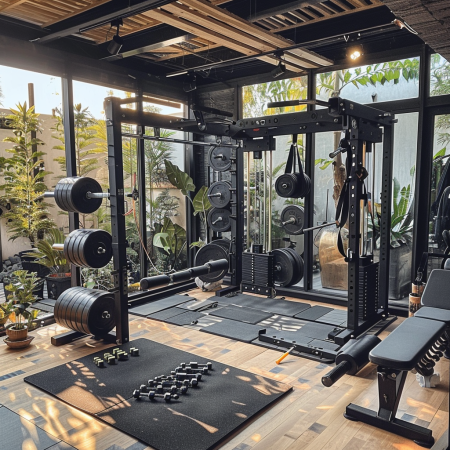1. The Risks of Sitting All Day: Why Staying Active Matters
Sitting for prolonged periods is linked to various health issues, including back pain, weight gain, and increased risk of cardiovascular diseases. According to studies, sitting for over eight hours a day without physical activity is as harmful to your health as smoking. Even if you exercise regularly, sitting too much throughout the day can negate some of those benefits.
Unique Insight: The human body is designed for movement, so staying active throughout the day can help improve circulation, reduce stress, and boost your overall mood and productivity.
Actionable Tip: Be mindful of how long you’re sitting. Set a timer to remind yourself to stand up and move every 30-60 minutes. Even short bursts of movement can make a difference in your energy levels and physical well-being.
2. Easy Desk Exercises to Incorporate Movement
You don’t need to hit the gym to stay active during your workday. Desk exercises are simple, quick, and effective ways to break up long periods of sitting. These exercises can improve your posture, increase flexibility, and keep your muscles engaged.
a. Seated Leg Lifts
This exercise targets your core and leg muscles while you’re sitting at your desk. Simply sit up straight and lift one leg off the ground, hold for a few seconds, and lower it back down. Repeat on the other leg. Do 10-15 repetitions per leg to engage your core and lower body.
b. Shoulder Rolls
To relieve tension in your neck and shoulders, try shoulder rolls. Sit upright, roll your shoulders forward in a circular motion for 10 seconds, then switch directions and roll them backward.
Actionable Tip: Integrate these simple movements into your routine throughout the day. Shoulder rolls, seated leg lifts, and stretching can be done without leaving your desk, making it easier to stay consistent.
3. Take Advantage of Breaks: Move and Stretch
Taking breaks to move isn’t just good for your body—it also helps reset your mind, making you more focused and productive. Use your breaks wisely by standing up, walking around, or doing some light stretching.
Pro Insight: Walking for even 5-10 minutes can improve circulation, clear your mind, and help prevent the sluggishness that often comes from sitting for too long.
Actionable Tip: Make it a habit to stand up and stretch every hour. You can also take walking meetings or use your lunch break to take a quick stroll outside. The fresh air and movement will re-energize you for the rest of the day.
4. Standing Desks and Active Workstations
Standing desks have become increasingly popular in recent years, and for a good reason. Alternating between sitting and standing can reduce back pain and improve posture. If a standing desk isn’t an option, consider other tools like balance boards or under-desk ellipticals to keep your body moving while working.
Actionable Tip: If you have a standing desk, aim to alternate between standing and sitting every 30 minutes to one hour. Start slow if you’re not used to standing for long periods and build up your stamina over time.
Unique Insight: Research suggests that standing for part of the day burns more calories than sitting, which can help with weight management over time. Even standing for an extra hour a day can make a difference.
5. Stretching and Mobility Work at Your Desk
Incorporating stretching and mobility exercises into your workday can help prevent stiffness and reduce the risk of injury. Try stretching your neck, back, and legs to relieve tension caused by sitting for long periods.
a. Neck Stretches
Tilt your head to one side, bringing your ear toward your shoulder, and hold for 10-15 seconds. Switch to the other side and repeat. This stretch helps relieve neck tension from staring at a computer screen.
b. Seated Spinal Twist
While seated, place one hand on the back of your chair and gently twist your torso in that direction, holding for 10-15 seconds. This stretch helps release tension in your lower back and improves spinal mobility.
Actionable Tip: Try a few stretches every hour to maintain flexibility and prevent tightness. Incorporating mobility work into your day not only helps your body feel better but also enhances your ability to focus and stay productive.
6. Stay Hydrated and Active by Drinking Water
Drinking water throughout the day is essential for staying hydrated and maintaining energy levels. An easy way to get more movement into your day is by using water breaks as a cue to get up and walk. Whether you’re filling your water bottle or heading to the restroom, each trip gives you an opportunity to stretch your legs.
Actionable Tip: Keep a water bottle on your desk and aim to drink a glass of water every hour. This helps keep you hydrated while also encouraging you to take short walking breaks.
Conclusion: Make Movement a Part of Your Daily Routine
Staying active while working a desk job doesn’t have to be difficult. By making small adjustments—like incorporating desk exercises, taking breaks to walk or stretch, and using tools like standing desks—you can improve your physical and mental well-being. The key is consistency, so try to build these habits into your daily routine. Even small bursts of movement throughout the day can make a big difference in your overall health.
















